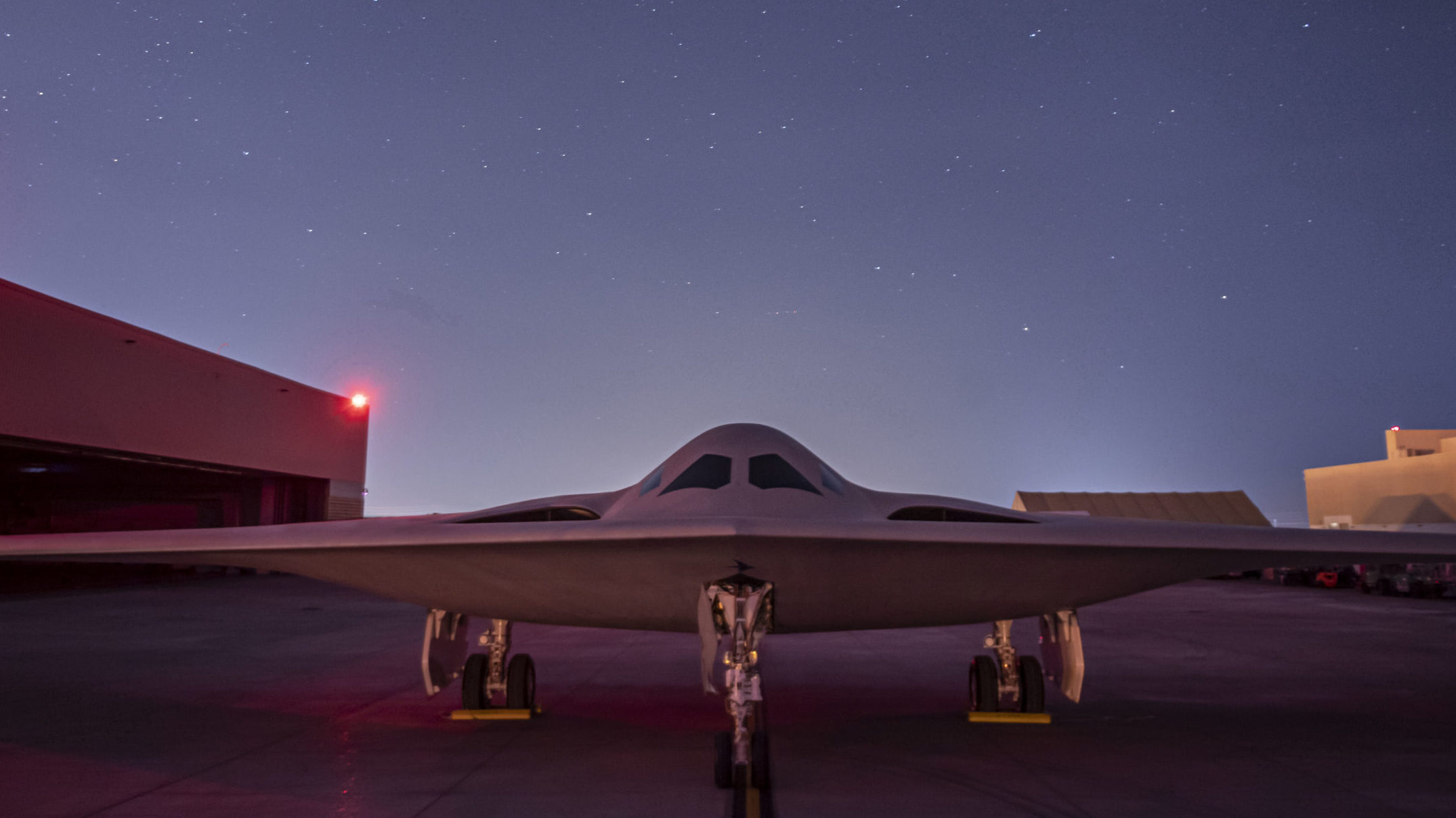
The B-21 Raider was unveiled to the public at a ceremony December 2, 2022 in Palmdale, Calif. (U.S. Air Force photo)
WASHINGTON — The year 2022 was one of incremental change for the Air Force, as its top civilian fought to get buy-in for his seven priorities both from Congress and inside the Pentagon itself. But in a recent interview with Breaking Defense, Air Force Secretary Frank Kendall hinted that 2023 could be more of a roller coaster.
“I’m seeing a lot of support for the operational imperatives. And I think I’m pretty comfortable with where we are on the [fiscal 2024] budget. I think we’ll have a good story to tell,” he said on the sidelines of Reagan Defense Forum earlier this month.
Kendall’s operational imperatives represent seven priorities for the Air Force as it positions itself to compete against a rapidly modernizing China. Those imperatives include some existing programs — such as the Next Generation Air Dominance (NGAD) family of systems, which includes a sixth-generation fighter — and broader areas of focus, such as resilient basing.
[This article is one of many in a series in which Breaking Defense reporters look back on the most significant (and entertaining) news stories of 2022 and look forward to what 2023 may hold.]
For the past year, the Air Force has been evaluating where it can invest its money to get the biggest return. And while Kendall declined to detail any specifics of the upcoming fiscal 2024 budget — including what to expect in terms of new development efforts, weapons program cancellations or aircraft retirements — he expressed optimism about the level of support the Air Force garnered from key organizations inside the Office of the Secretary of Defense during the development of the next spending proposal.
“There was funding needed for each of the seven [imperatives], and we did a good job — I think — of working closely with [the Pentagon’s Cost Assessment and Program Evaluation office] and the OSD staff, to share our analysis [and] take their comments. it was a very collaborative, cooperative process this year,” he said. “There was broad agreement about the things that we’re here to do, and very good support for funding it.”
Although Kendall is keeping his cards close to his chest with regards to the budget, there have been some hints on what to expect in 2023, such as the potential creation of a “Collaborative Combat Aircraft” program, under which the Air Force would develop a drone wingman for the NGAD fighter.
As the biggest customer of the F-35, the Air Force will help steer a Pentagon decision on whether to purchase an advanced new engine for the F-35 or update its existing F135 propulsion system.
And aviation analysts are carefully watching the NGAD program for any signs that the Air Force could downselect Boeing, Lockheed Martin and Northrop Grumman to build its next-gen fighter — a decision Kendall told Breaking Defense was “not all that far away” in a July interview.
While 2023 promises to bring bigger changes for the Air Force, several major shifts occurred this past year.
During the rollout of the FY23 budget, the Air Force announced it would truncate the buys of the F-15EX and HH-60W combat rescue helicopter, with plans to purchase its final aircraft of each type in FY24 and FY23, respectively. However, that proposal is far from a done deal, as opposition from Congress — and the Air National Guard, in the case of the F-15EX — could force the Air Force to continue procuring both aircraft.
In April, the Air Force finally announced plans to buy the E-7A Wedgetail from Boeing, bringing to end months of speculation about whether the service would actually pony up the cash to buy a new aircraft to replace the E-3 AWACS. The announcement was widely hailed by Congress, which has badgered Air Force leadership with questions about whether it would be possible to speed up procurement of the first plane any further.
For the second year in a row, Congress mostly agreed to a slew of proposed aircraft divestments, including — for the first time ever — the retirement of 21 A-10 Warthog attack planes. In previous years, lawmakers have staunchly opposed all plans to mothball the A-10 fleet.
The list of aircraft to be sent to the boneyard encompasses more than 200 aircraft, including some of the service’s oldest F-16s and F-15s, T-1 training aircraft, KC-10 and KC-135 tankers, HH-60G Pave Hawk helicopters, E-8C JSTARS and E-3 early warning and control planes. What it doesn’t include is the Air Force’s oldest F-22 jets, which the service wanted to retire to cut costs and free up pilots and maintenance personnel for other platforms.
This year also marked a bunch of big milestones for some of the Air Force’s most high-tech programs.
After several failed tests, the service finally logged two booster launches of the hypersonic AGM-183A Air-launched Rapid Response Weapon, followed by a successful test of an all-up-round. Raytheon nabbed a $985 million contract for the Hypersonic Attack Cruise Missile program, beating out Boeing and Lockheed Martin to begin work on the Air Force’s first scramjet-powered, air-launched hypersonic weapon.
And of course, the B-21 Raider was finally revealed to the public in a dramatic, once-in-a-generation ceremony held at dusk in the California desert.






















